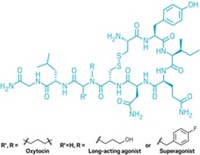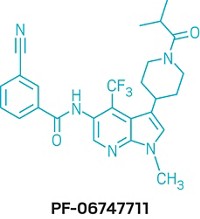Advertisement
Grab your lab coat. Let's get started
Welcome!
Welcome!
Create an account below to get 6 C&EN articles per month, receive newsletters and more - all free.
It seems this is your first time logging in online. Please enter the following information to continue.
As an ACS member you automatically get access to this site. All we need is few more details to create your reading experience.
Not you? Sign in with a different account.
Not you? Sign in with a different account.
ERROR 1
ERROR 1
ERROR 2
ERROR 2
ERROR 2
ERROR 2
ERROR 2
Password and Confirm password must match.
If you have an ACS member number, please enter it here so we can link this account to your membership. (optional)
ERROR 2
ACS values your privacy. By submitting your information, you are gaining access to C&EN and subscribing to our weekly newsletter. We use the information you provide to make your reading experience better, and we will never sell your data to third party members.
Pharmaceutical Chemicals
New compound enhances naloxone’s ability to reverse opioid overdoses
The molecule works by binding at a newly identified site on the opioid receptor
by Alla Katsnelson, special to C&EN
July 3, 2024

A novel compound strongly improves the efficacy of naloxone, the substance used to reverse overdoses of morphine, fentanyl and other opioid drugs. When administered to mice along with naloxone, it is 10 times as potent as naloxone alone at blocking morphine’s ability to attenuate pain and depress breathing (Nature 2024, DOI: 10.1038/s41586-024-07587-7).
Endogenous opioids such as enkephalins and endorphins, as well as opioid drugs such as morphine and fentanyl, bind to the μ-opioid receptor. The new molecule is a type of compound called a negative allosteric modulator—negative because it dials down opioids’ effects in the body and allosteric because it makes contact with a different binding site on the receptor than opioids do.
“The idea of increasing or decreasing [μ-opioid] receptor activity has been around for more than a decade, but this is in my mind the first study that really has jumped to identifying a compound that has shown in vivo efficacy,” says Catherine Cahill, a neuropharmacologist at the University of California, Los Angeles, who wrote a commentary accompanying the work.

Naloxone works by outcompeting opioids at the orthosteric, or usual, binding site. The new molecule seems to have no effect on its own but improves naloxone’s potency by extending the time it remains bound to the opioid receptor. That’s important: naloxone acts in the body for about 30-90 minutes, while fentanyl can act for longer, so it’s possible for naloxone to wear off while a person is still experiencing an overdose.
“Negative allosteric modulators of the μ- opioid receptors are virtually unknown, and this would be the first in class,” says Susruta Majumdar, a clinical pharmacologist at Washington University in St. Louis who co-led the research. “Traditional medicinal chemistry approaches have failed to deliver them.”
Negative allosteric modulators have been hard to find in part because their binding sites are not as distinct as orthosteric ones, says John R. Traynor, a pharmacologist at the University of Michigan who was not involved in the work. “The orthosteric binding site is a very defined pocket—it’s like putting your hand in a glove,” he says. “But allosteric binding sites are really just clefts or dents in the protein.”
Majumdar and his colleagues used an approach called DNA-encoded library screening to sift through 4.4 billion compounds and home in on their lead molecule, compound 368. Using cryo-electron microscopy, they showed that the molecule contacts the receptor at a spot just above the orthosteric binding site. “By binding there, it interacts with naloxone and increases naloxone’s residence time,” says Vipin Ashok Rangari, a postdoctoral researcher in Majumdar’s lab and an author of the study.
When the researchers gave the mice morphine and then injected them with compound 368, they found they needed to administer about one-tenth the amount of naloxone to reverse the animals’ overdose symptoms. Majumdar notes that the compound still needs extensive optimization before it is ready for clinical testing. “Now that we know where it binds, we can use structure-based medicinal chemistry approaches to improve it,” he says. The team is currently working on analogs of the molecule that have better brain penetration and higher potency.
One side effect of naloxone is intense symptoms of opioid withdrawal, but although compound 368 enhances most of naloxone’s actions, it does not seem to enhancewithdrawal symptoms. It’s unclear why that is, Traynor says. “I don’t think they have really established that is real yet,” he says, but if so, “it would be a really big advance.”





Join the conversation
Contact the reporter
Submit a Letter to the Editor for publication
Engage with us on Twitter